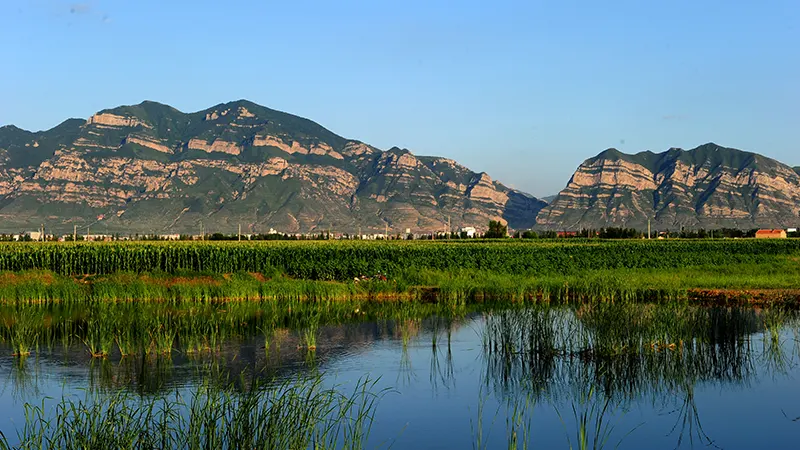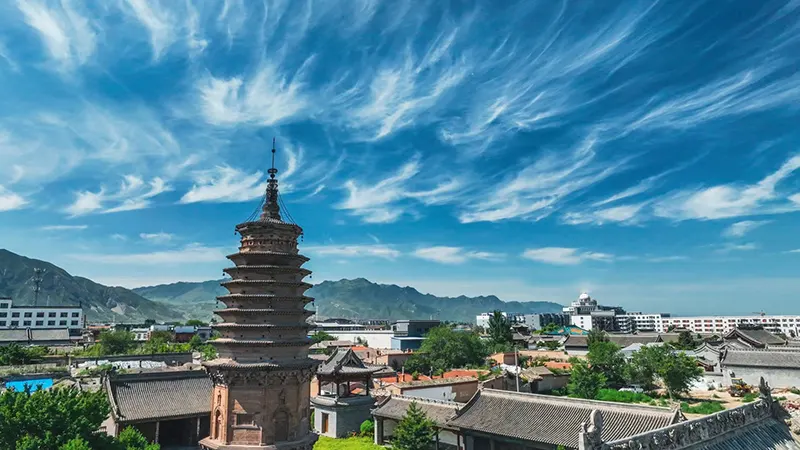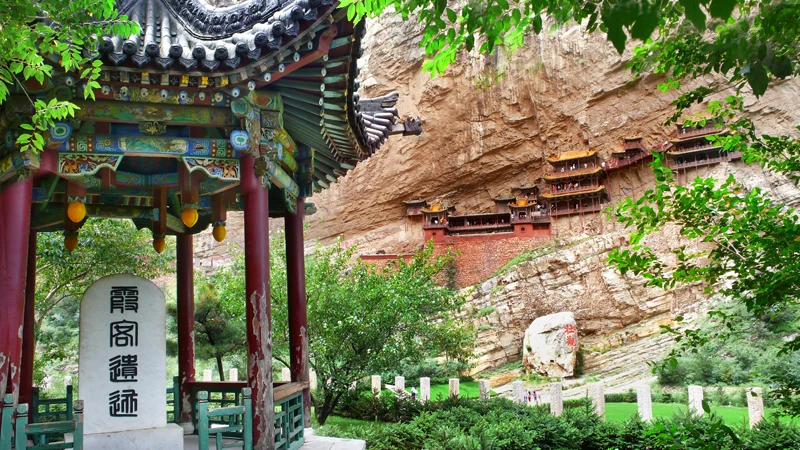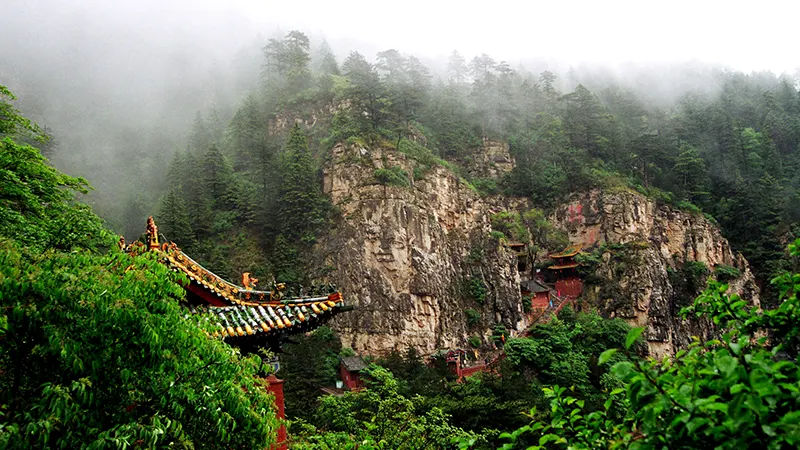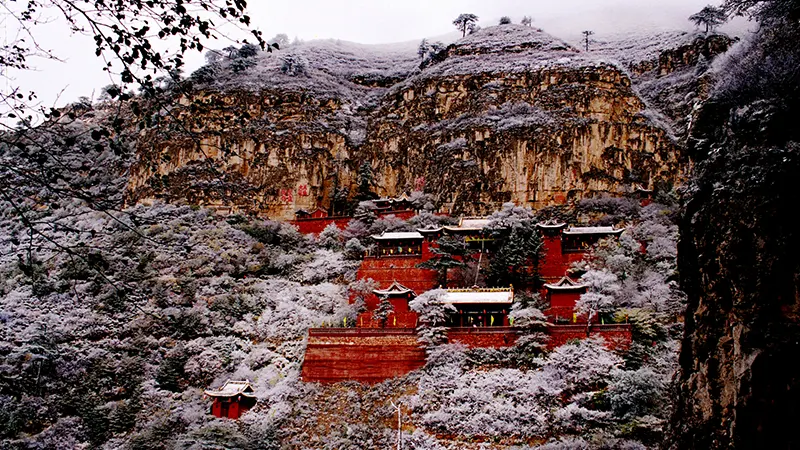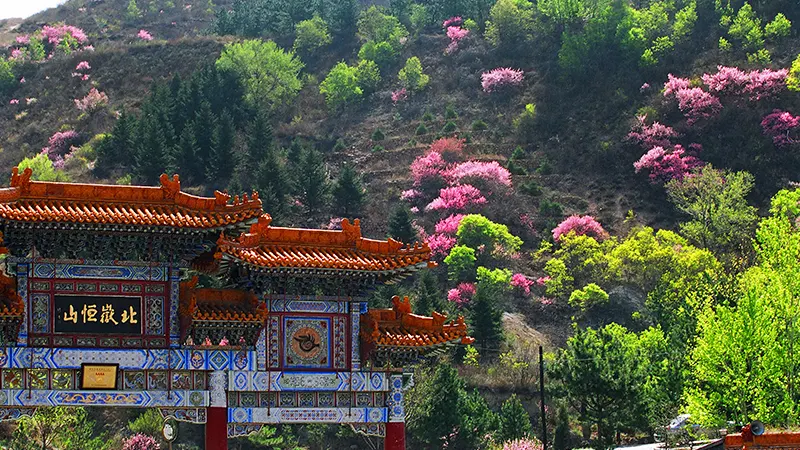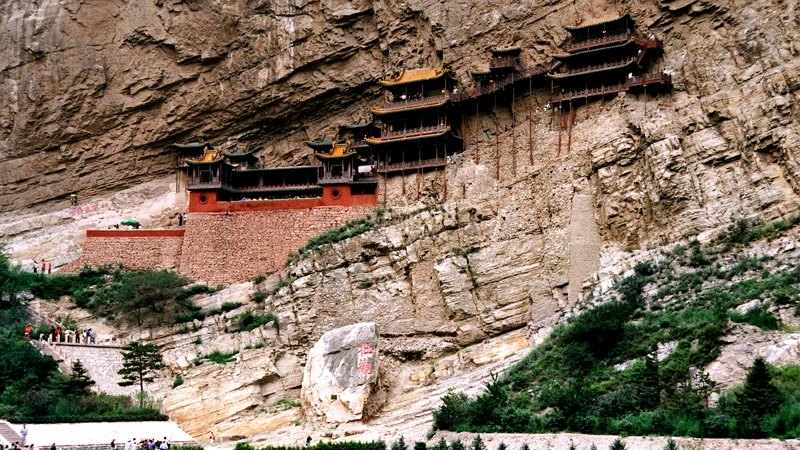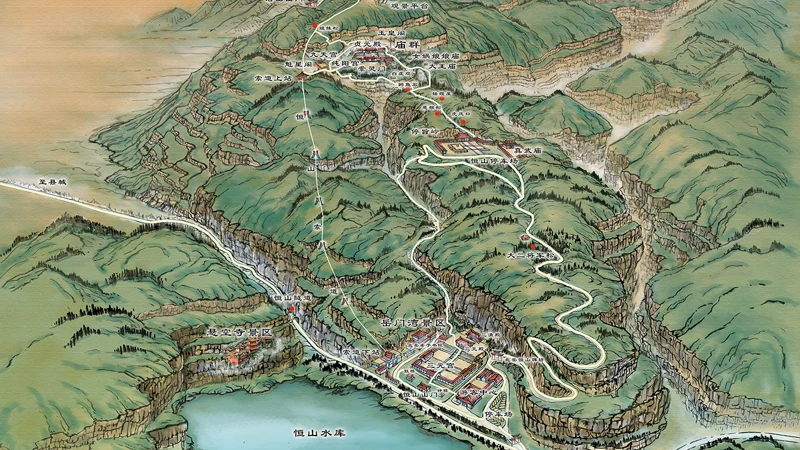Mountain Collaboration, Industry Win-Win: "Talking About Beautiful China" (Taishan Edition) Held in Tai'an City, Shandong Province
Publish Time:
2025-10-26 16:27
Source:
On October 20, the large-scale, multi-media interview series "Talking About Beautiful China" (Taishan Edition) was held in Tai'an City, Shandong Province.

Zhang Yongli, President of the China Scenic Spots Association and Director of the Organizing Committee for the "Beautiful China Ten-Thousand-Mile Journey" campaign; Chang Jiwen, Deputy Director and Researcher at the Resource and Environmental Policy Research Institute of the Development Research Center of the State Council; Liu Jing, Vice Chairman of the China Literary and Artistic Volunteer Association, renowned performing artist, acclaimed actor who portrayed Premier Zhou Enlai, and also serves as the Image Ambassador for the China Scenic Spots Association; Sun Lei, Secretary of the Party Committee of the Mount Tai Scenic Area; Cao Qilong, Secretary of the Party Committee and Director of the Hengshan Mountain Scenic Area Management Center; Wei Wei, Deputy Secretary of the Party Working Committee and Director of the Songshan Scenic Area Management Committee; Jiang Mao, Member of the Party Committee and Deputy Director of the Huangshan Scenic Area Management Committee; Ma Yaofeng, Member of the Party Committee and Deputy Director of the Huashan Scenic Area Management Committee; and Hu Rongfeng, Deputy District Mayor of the Nanyue District People's Government—along with CCTV host Liu Dongdong—gathered to focus on "Mountain Collaboration, Industry Win-Win," jointly promoting high-quality, sustainable development of scenic areas.

Guests engaged in a lively discussion around three key topics: "Building an Eco-Foundation—Laying the Green Groundwork for Industry-Wide Win-Win Growth"; "Cultivating Cultural Identity—Strengthening National Spirit through Cultural Confidence"; and "Empowering with Intelligence—Fueling the Digital Engine That Drives Scenic Area Development."

Zhang Yongli pointed out that China was among the earliest countries in the world to harness mountainous landscapes as scenic resources. Among the 14 categories of scenic and historic areas, "mountain-type" sites account for the largest number. As shining examples of implementing the "Two Mountains" philosophy, these scenic areas must, in line with the General Secretary's directives, plan their development from the perspective of harmonious coexistence between humanity and nature. By pursuing high-level conservation efforts, they can continuously cultivate new advantages and driving forces for high-quality growth. As an essential component of China's innovative natural protected area system, scenic areas must set exemplary standards in practicing Xi Jinping's Thought on Ecological Civilization, firmly prioritizing ecology and placing protection above all else. Within the comprehensive governance framework of the mountains-water-forests-farmlands-lakes-grasslands-sand ecosystem, mountains serve as critical natural geographic units that enhance both the stability and sustainability of the entire ecological system. With the rapid advancement of next-generation information technologies such as big data, cloud computing, and artificial intelligence, the "Three Mountains and Five Peaks" are actively leveraging cutting-edge tech solutions and modern equipment to bolster nature conservation, patrol monitoring, and other vital conservation activities. This approach is steadily elevating the informatization, digitalization, and intelligentization of regional and watershed management across these areas, offering valuable insights and best practices that empower mountain-type scenic areas nationwide to improve their management effectiveness and environmental stewardship.
"The Five Great Mountains of China" and Mount Huangshan, as the first batch of nationally designated key scenic and historic areas, are invaluable and rare natural and cultural legacies of the Chinese nation. On one hand, as a complex natural and cultural entity, they occupy distinct geographical regions, boast unique landscapes, and exhibit profound cultural integration—collectively embodying the symbolic meaning of China's territorial integrity and national identity. They represent the distinctive geographic "genetic code" and spiritual totems of the Chinese people, nurturing in them an indomitable spirit, unwavering resilience, and deep-rooted confidence. On the other hand, serving as a natural museum that chronicles China's million-year history of human habitation, ten-thousand-year cultural evolution, and over five-thousand-year-old civilization, these sites authentically and vividly convey to the world and humanity at large what kind of civilization and nation China truly is. They reveal the Chinese people's profound cosmology, worldview, social philosophy, and moral values, showcasing a China that is trustworthy, endearing, and worthy of respect. To "cultivate the soul" through the culture of the "Three Mountains and Five Great Mountains," we must focus on three key priorities: First, embrace our historical mission and maximize the cultural benefits they offer; second, foster regional collaboration to strengthen and unify the cultural foundations across these iconic sites; and third, welcome technological innovation to continuously refresh and elevate cultural practices and outreach efforts.
Zhang Yongli summarized the three major trends in the current development of smart scenic areas: in terms of scope, shifting from "single-point intelligence" to "whole-area collaboration"; in terms of functionality, moving from "management tools" toward "value creation"; and conceptually, returning from "technology application" to "human-centered care." Regarding how digital and intelligent technologies can empower mountainous scenic spots and help build globally recognized IPs, he highlighted three key directions: First, leverage these technologies to strengthen natural ecological protection, ensuring that mountainous scenic areas retain their lush green landscapes as their core identity. Second, use digital tools to enhance content creation and dissemination, revitalizing the unique cultural characteristics of these areas. Finally, harness digital capabilities for precise global marketing strategies, boosting the economic value and appeal of mountainous scenic spots on a global scale.

In protecting while developing, and in achieving high-level conservation alongside scenic area development, we can ultimately foster a virtuous cycle of mutual enhancement. Chang Jiwen believes that effectively safeguarding the ecological integrity of scenic spots requires efforts in several key areas: strictly adhering to planning guidelines, maintaining consistent investment, deploying AI-driven monitoring technologies across the board, launching comprehensive ecological restoration and improvement initiatives, and actively engaging and encouraging tourists to participate in both monitoring and stewardship. Moreover, in this era of digitalization—and especially as we embrace the convergence of digital and intelligent technologies—people’s lifestyles and travel habits are undergoing profound transformations. Today, everyone is not only a traveler but also a content creator, blogger, or even livestreamer. As such, mountainous scenic areas must proactively conduct thorough research amid the ongoing wave of digital innovation, gaining deep insights into visitors’ evolving mindsets and behaviors. Only then can they successfully embark on a journey of digital and intelligent transformation, offering tourists rich, personalized experiences, cutting-edge digital showcases, and seamless collaborative promotion among different attractions—empowering travelers with ample information and freedom of choice.

Liu Jing stated that simply having the opportunity today to explore the culture of the Five Great Mountains with everyone is itself incredibly valuable. Throughout the history of global civilization, Chinese civilization has remained continuously vibrant, boasting an unparalleled length and resilience—making it the only culture in the world that has never been interrupted. Whether it’s traditional literature, art, or cutting-edge science and technology, these elements have all played a vital role in shaping who we are today. Moreover, film and television productions have proven to be powerful catalysts for boosting tourism in scenic areas, helping bring ancient cultural traditions to life. Combining the essence of the Five Great Mountains’ culture with modern media is therefore a crucial area of study. To fully leverage this potential, we must harness new technologies like AI, enabling artists to immerse themselves in these iconic sites and create diverse, innovative works that breathe fresh energy into our cultural heritage.

Sun Lei stated that, as a World Cultural and Natural Heritage site, ecological security is the "lifeline" of Mount Tai, while cultural and tourism development serves as its "driving force." In response, Mount Tai has steadfastly embraced "subtraction" in its core scenic areas, treating ecological preservation and heritage protection as non-negotiable red lines. The mountain has always prioritized conservation above all else, ensuring that planning comes first. At the same time, it has actively pursued "addition"—bolstering policy support, leveraging technology for innovation, and fostering new forms of tourism—to build a robust foundation for both protection and sustainable growth. By combining "conservation as the cornerstone with development as the enabler," Mount Tai has effectively achieved a balanced approach, initially striking a harmonious equilibrium between preservation and progress. In terms of cultural outreach, Mount Tai is deepening its engagement by delving deeper into its rich historical narratives, while simultaneously innovating in how these stories are presented to modern audiences. This ensures that the mountain’s culture not only carries profound historical depth but also resonates with contemporary values and sensibilities. As for smart tourism initiatives, the primary goal is to harness cutting-edge technology to enhance management efficiency, deliver more personalized services, and elevate visitor experiences. Specifically, Mount Tai is exploring three key areas: using digital tools to boost administrative effectiveness, deploying intelligent solutions to create warmer, more attentive service experiences, and applying technological advancements to make every aspect of the visit more engaging and memorable.

A beautiful ecological environment is one of the key hallmarks of scenic areas. Cao Qilong shared insights into Hengshan Mountain's over-30-year "green relay" of tree planting, focusing on both "mountain management" and "water management." At the same time, he highlighted how the region has leveraged its unique frontier culture and the awe-inspiring spectacle of "the Northern Pillar Supporting Heaven," showcasing recent efforts to systematically promote cultural research and utilization, deepen the integration of culture and tourism, and revitalize the vitality of traditional heritage. Additionally, he discussed the new opportunities and innovative ideas emerging from the dynamic intersection of Beiyue culture with modern-day IP trends.

Wei Wei describes the spatial planning of Songshan as "drawing circles," laying the foundation with "beautifying" ecological restoration, invigorating it through "creating an atmosphere" for dynamic revitalization, and ensuring long-term sustainability with cutting-edge "tech-driven innovation." By integrating "form, appearance, spirit, and soul" into a unified approach, the plan achieves harmonious coordination at the central "heart of heaven and earth," ultimately fostering the synergistic coexistence of "culture" and "ecology"—two universal values. This transformation ensures that the World Heritage site not only lives on in history books but also thrives vividly amidst lush green mountains, clear waters, and thriving economic opportunities. Meanwhile, against the backdrop of digitalization, Songshan—spanning 3.6 billion years of geological history—is quietly undergoing a stunning metamorphosis. Leveraging the power of technology, it’s evolving from a static tourist attraction into a vibrant, globally connected cultural and tourism hub, offering immersive, interactive, and collaboratively built experiences that are both smart and sustainable, delivering a visionary response that meets people’s deepest aspirations and surprises.

Jiang Mao outlined how Huangshan balances conservation with development through "three key enhancements": strengthening systematic protection, boosting industrial growth, and amplifying its radiating influence to drive broader progress. She emphasized that developing the cultural and tourism industry not only enhances people's quality of life and fosters socio-economic growth but also plays a vital role in nurturing humanity's spiritual home, showcasing China's global image, and fostering mutual learning among civilizations. Empowered by the latest wave of technological transformation—led by digital and intelligent technologies—Huangshan continues to tap into international markets, deepen its embrace of digital innovation, and expand its global footprint, setting a benchmark example for mountain destinations worldwide.

Ma Yaofeng believes that the creation of Huashan's "green foundation" doesn't rely on spectacular, large-scale projects—but rather on "step-by-step efforts," the hard work and dedication of the scenic area's staff, the growing environmental awareness among visitors, and the implementation of forward-thinking, innovative ideas and measures. It is precisely these combined factors that have enabled Huashan's iconic "danger" and "greenery" to truly coexist harmoniously over the long term. In recent years, Huashan has leveraged its breathtaking, rugged landscape and profound cultural heritage by adopting practical initiatives such as "using technology to create immersive experiences, integrating culture to inspire deeper connections, and spreading its message across the entire region." As a result, the "Huashan Sword Debate" IP has transformed into a tangible, engaging, and highly shareable tourism attraction—and a cultural force with far-reaching influence. Looking ahead, we eagerly look forward to collaborating with our fellow leaders of the Five Great Mountains to jointly develop the "China's Five Great Mountains Cultural IP." Together, we will launch co-branded products, organize collaborative cultural events, and weave the unique cultural symbols of each mountain into a grand, deeply meaningful "Cultural Pilgrimage Route"—a journey that celebrates and connects the rich legacies of China's most revered peaks.

Hu Rongfeng introduced, from the perspectives of safeguarding greenery, promoting green initiatives, and protecting the environment, how Hengshan Mountain—known as the "Unique Beauty Among the Five Mountains"—serves as a vital ecological barrier for the Yangtze River Economic Belt. He shared practical insights and notable achievements in preserving its lush landscapes and fostering high-quality development in Nanyue. Additionally, he provided a detailed account of how Nanyue can cultivate its distinctive "cultural magnetism" by staying true to core values, fostering integration, and creating platforms that transform the region’s rich heritage—such as the harmonious coexistence of Buddhism and Taoism, the deeply rooted longevity culture, fire-related traditions, and ancient ritual practices—from mere "resources on display" into tangible, immersive experiences. Ultimately, he expressed hope for collaborative efforts to promote the inheritance and innovation of China’s outstanding traditional culture.
Distinguished guests have gathered together to jointly create a brilliant chapter. Through lively exchanges and the sharing of their practical experiences and profound insights, they have come together to explore how, in today’s evolving era, we can better transform our lush green mountains and clear waters into invaluable treasures—turning ecological assets into economic prosperity. By nurturing cultural pride through the rich heritage of renowned mountain regions, they aim to ignite the "digital engine" of smart economies, driving dynamic growth in scenic areas—and, ultimately, inspiring the world to embrace the captivating narrative of a beautiful China.
This event is hosted by the China Scenic Spots Association and the Taishan Scenic Area Management Committee of Tai'an City, with support from the Organizing Committee of the Beautiful China Mileage Tour and undertaken by Tai'an Taishan Culture & Tourism Group Co., Ltd.
Keywords:
Related News


